Government as a Platform
On June 14th 2017 the Lab+ "Government as a Platform" (GaaP) team ran a small exploratory workshop with representatives from private, community and government sectors. We intended to explore the idea of third parties building value on top of government components, and so sought to understand the user needs of actual and potential service intermediaries. In a lot of cases, intermediary service providers already doing this, but through largely manual and difficult processes. A clear appetite emerged from the discussion for more programmatic and automated access to useful components or information. But how far did it go?
The short version or the long version?
Below is the summary from the report we wrote. You can also download the broader report (DOC 1.3 MB) which includes the methodology for how we ran the consultation, the raw outcomes and what teams actually built in the 2-hour workshop.
Overview
Part of the concept of building GaaP revolves around the assumption that third parties would build value on the back of government components, such as data or content, programmatic business rules, or transaction services. We needed to test this assumption with the New Zealand private and community sectors. As such, we ran a small targeted event to test the concept with a range of community, private and government (including local government) sectors to explore the concept. Participants included about a third from each sector, making a fairly even distribution of interests and domain knowledge. We gathered feedback and ideas, and explored user needs should such an approach become widespread.
Participants were enthused about the concept. However, some were concerned that the workshop was not enough time to adequately explore such a transformative concept. We assured participants that this workshop was just a toe in the water, and that should it be promising, that it would be followed up with further research, testing, co-design and co-building.
The workshop was more than promising. It was inspiring!
Where the discussion took us: modeling the possibilities
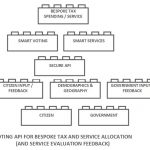
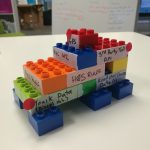
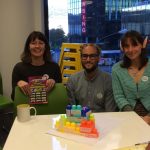
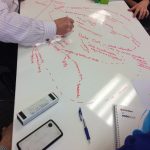
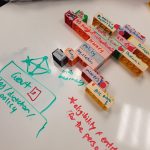
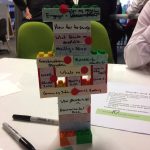
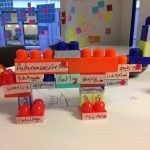
Some workshop insights
The topic is just so big, we need more time to work through this.
Government needs to change the culture of how it operates from how does this person fit in my box to how can I help you with your problem.
There are big GDP payoffs if you can improve the lives of even a small proportion of society.
By the end of a short 2-hour toe dipping, all teams had contributed extensive ideas about what government components might be useful to build upon, had all built something tangible (with Duplo or mindmaps) and had given extensive feedback about user needs, barriers and benefits of such a model. We also had online input through a wiki and Twitter.
The teams tackled a broad range of issues from autonomous cars to neighbourhood engagement and predictive tools, to real time transport and routing applications. All conceptual, but useful in exploring where government could play a part in enabling the digital economy through public digital infrastructure.
We entered the experiment open to all possibilities, but the outcomes of this small event clearly merit further investigation, experimentation and engagement with the broader community.
- We had some challenges getting people on the same page, one team was an hour in and still debating the definition of business rules.
- All teams ended up building something tangible (Duplo or mindmaps) resulting in some fantastic insights and ideas.
- A lot of good ideas about data/content, business rules and transaction services they’d like to see programmatically available to build on.
- People were keen to continue the discussion and exploration further.
Next steps
From the workshop a few things surfaced that would be worth progressing to further test the hypothesis that the broader community and private sectors would want to build value on the back of government as a platform.
- We could do further discovery with industry and community sectors to flesh out the user needs for service intermediaries to build on top of government, taking into account previous examples, while trying to co-design the best path forward.
- We could work with industry and community sectors to explore, co-design and co-implement a few test cases of GaaP, focusing on a few possible examples. The government components identified in the workshop yielded a number of possibilities including:
- a government human service register
- business rules from some specific agencies
- some transactional services.
We think it is critical in this space to test through doing, so our intent would be to continue exploring through testing, prototyping and building demonstrators to explore the viability of the concept more thoroughly.
Published


